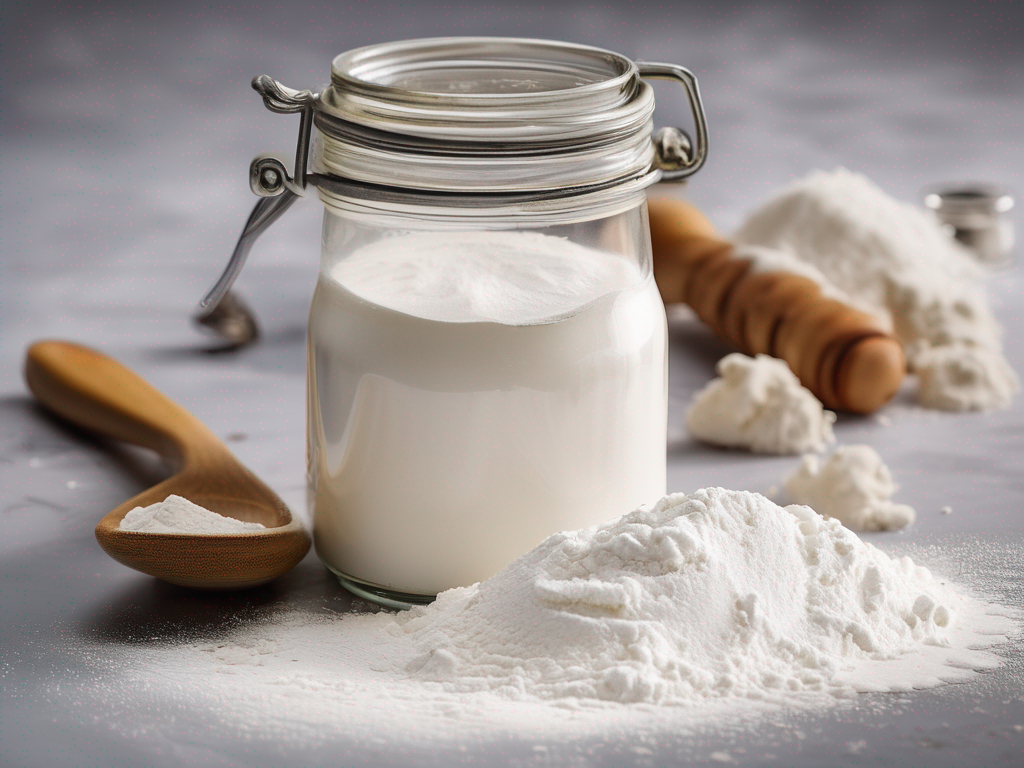
How to Prevent Clumping in Baking Powder: Storage Tips and Tricks
Get Your Free Food Safety Cheat Sheet
30 most common foods with instant answers. Print it and stick it on your fridge—completely free!
How to Prevent Clumping in Baking Powder: Storage Tips and Tricks
Baking powder is a staple ingredient in many kitchens, used to help baked goods rise and achieve that light, fluffy texture we all love. However, if not stored properly, baking powder can clump, leading to uneven results in your baking. In this blog post, we will explore the causes of clumping in baking powder and provide you with practical tips on how to prevent it through proper storage techniques. (Baking powder)
Understanding the Science Behind Clumping
Before we dive into storage solutions, let's first understand why baking powder tends to clump. Baking powder is a combination of an acid, a base, and a filler like cornstarch. When exposed to moisture or humidity, the acid and base can react, causing the powder to clump together. Here are some common factors that contribute to clumping:
Factors that Contribute to Clumping:
- Moisture: Exposure to moisture in the air or improper storage can lead to clumping.
- Temperature: Fluctuations in temperature can cause condensation, leading to moisture buildup.
- Humidity: High humidity levels can accelerate the clumping process.
Now that we understand why clumping occurs, let's explore some effective strategies to prevent it through proper storage techniques.
Proper Storage Techniques for Baking Powder
To keep your baking powder fresh and clump-free, follow these storage tips:
1. Store in a Cool, Dry Place
- Avoid Moisture: Keep baking powder away from sources of moisture such as sinks, stovetops, or dishwashers.
- Choose Airtight Containers: Transfer baking powder to an airtight container to protect it from humidity.
2. Keep Away from Heat Sources
- Avoid Direct Sunlight: Store baking powder in a cool, dark cupboard away from direct sunlight.
- Avoid Heat Exposure: Keep it away from heat sources like ovens or stovetops.
3. Check the Expiration Date
- Regularly Rotate Stock: Use older baking powder first and replace it with a fresh supply to ensure optimal performance.
4. Seal the Container Properly
- Tightly Close Lid: Make sure the container is tightly sealed after each use to prevent moisture from entering.
5. Use Silica Gel Packs
- Absorb Moisture: Place silica gel packs in the container to absorb any excess moisture and keep the baking powder dry.
Additional Tips for Baking Powder Storage
In addition to the above techniques, here are some extra tips to ensure your baking powder stays fresh and clump-free:
- Avoid Refrigeration: While some may suggest refrigerating baking powder, the moisture in the fridge can actually cause clumping.
- Avoid Freezing: Freezing baking powder can also lead to clumping when it thaws.
Conclusion
By following these simple storage techniques and tips, you can prevent clumping in your baking powder and ensure that your baked goods turn out perfectly every time. Remember to store your baking powder in a cool, dry place, away from heat and moisture, and check the expiration date regularly to maintain its freshness. With proper storage practices, you can enjoy smooth, lump-free baking powder for all your culinary creations.
So, the next time you reach for that [baking powder](/food/baking powder) in your pantry, you can do so with confidence, knowing that it's in the best possible condition for your baking endeavors. Happy baking! (Baking powder)
Related Posts
Here are some other articles you might find helpful:
Authoritative Food Safety References
These agencies and university labs inform every tip and health precaution we publish.
USDA FoodKeeper – Cold Storage Guidelines
Official refrigerator, freezer, and pantry timelines maintained by the U.S. Department of Agriculture.
Visit USDA FoodKeeperFDA Produce Safety Rule & Grower Guidance
Field-to-fridge handling practices that prevent contamination of fruits, vegetables, and leafy greens.
Visit FDA Produce SafetyCDC Foodborne Illness Prevention Hub
Surveillance-backed guidance on pathogens, symptoms, and steps to reduce foodborne illness risk.
Visit CDC Food SafetyUC Davis Postharvest Technology Center
University research detailing optimal storage atmospheres for produce after harvest.
Visit UC Davis PostharvestPenn State Extension – Home Food Preservation & Safety
Peer-reviewed extension bulletins on safe canning, chilling, and reheating practices.
Visit Penn State ExtensionGet Your Free Food Safety Cheat Sheet
30 most common foods with instant answers. Print it and stick it on your fridge—completely free! Want more? Upgrade to the complete guide with 70+ foods.
Scan your food directly and get instant safety info using our AI-powered camera feature.